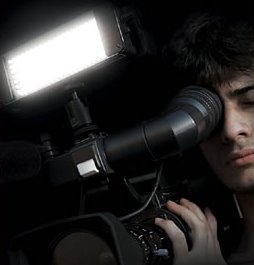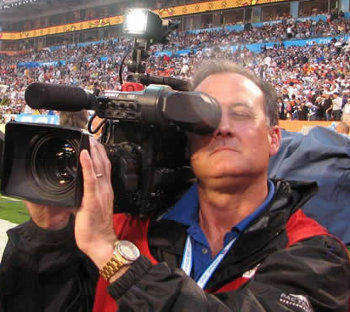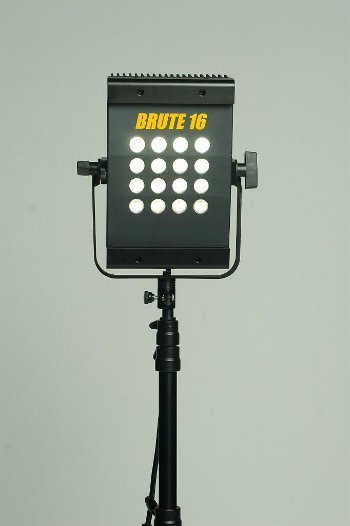 Back to selection
Back to selection
HIGH BEAMS
 Litepanels' MiniPlus
Litepanels' MiniPlus Originally published in the Spring 2009 issue.

Although cameras always seem to attract the most interest, lighting (and the correct use of it) is perhaps the most vital aspect of the cinematographer’s craft. The major innovation of the lighting front in the last few years has been the appearance of LEDs. LED (light-emitting diode) technology has been around for almost 40 years, however, so what’s new about it that impacts the movie-making industry? Only in recent years has the technology advanced to the point where LED light sources can provide enough illumination for movie lighting. The attraction is obvious: LED lights run cooler than halogen or HMI bulbs, creating less heat in the studio, safer handling for the crew, and above all, keeping the talent cool. LEDs are very long-lasting, and with low current draw, enable location use in private homes without concern of blowing fuses; they can be readily powered by low-voltage batteries, even from an automobile accessory socket. Most LED lighting is relatively low powered compared with traditional studio lighting, so it is ideally used in small interior sets, inside automobiles, or as “beauty” lights to add some fill to the actors’ faces and to put a sparkle in their eyes. There are a great many small on-camera LED lights on the market now, but we’ll take a look at three companies that have pushed the LED envelope one way or another to create innovative, practical set lighting.
Litepanels achieved early industry acceptance with their compact Mini lights, available in spot or flood, daylight (5,600K) or tungsten (3,200K) color temperature; all can be dimmed. The latest version, the MiniPlus, is 20 percent brighter than the original product. Two light kits include rechargeable batteries, AC adaptors and gels for diffusing or changing the color temperature. The shape of the Mini lights permits use in tight spaces, such as automobile interiors, and they are widely used in the industry when a small, highly portable, close-range light is required. There’s also an infrared version of the popular Mini and a MiniPlus DV that can be powered by small camera batteries. The Litepanels 1×1 (referring to it being one foot square) is modular, so units can be added together to form a 2×2, a 4×4, or more when needing a large, soft LED light source. Litepanels offer two Ringlites, the Cinema 19” and the smaller Ringlite Mini. Filling the demand for a small, inexpensive on-camera LED, there’s the Litepanels Micro, powered by 4 AA batteries. It lists at under $350, weighs only 4 ounces, and the 5600K output is dimmable.

Zylight offer a quite different approach to location lighting with two products: the Z50 and the newer Z90, offering four times the light output of the Z50. Both feature adjustable color temperature (from 2,500K to 9,000K) plus/minus green correction. So it’s possible to match them well to other light sources using a color temperature meter or by just watching the monitor if your color vision is up to it. The Z90 also has the unusual ability to provide a wide range of colored light without gels or filters. Using the digital display, it’s possible to create user-defined presets, and the Zylink feature enables the Z90 to be operated wirelessly together in order to change all the units simultaneously or individually. So the fill light can be dimmed, the hairlight brightened, and the background color changed at will, all from the one remote controller. The Z90 is only 51/3” x 3” x 2”, weighs about a pound, and lists for $985; the Z50 is a tad smaller and lists for $675. The remote lists for $475. The Zylights can operate from a variety of power sources with the appropriate adaptor, including AC, rechargeable batteries, battery belts and D-tap connection from a camera.

LEDz aimed to challenge the market position of the popular HMI lights. Long used as a bright, daylight color temperature, portable light source, HMI lighting has a few inherent disadvantages. The units are expensive and quickly get very hot, but until recently, no LED units could challenge them for sheer output. The LEDz Brute 16, claimed at its introduction to be the brightest LED fixture in the world, has an equivalent output to a 200 watt HMI flood. At a list price of $2,520, it also competes well on price. The Brute 16 weighs 5.5 pounds, runs off AC (100-240 volts) and has a color temperature of 5500K with an estimated lamp life of 60,000 hours. With a long-term commitment to the industry, including rental houses who are expected to give their equipment the hardest use, the company offers a lifetime warranty. At 16 feet, the Brute 16 provides a respectable 36 footcandles of illumination, and a soft box has been developed in association with Chimera. The LEDz range includes the smaller Brute 9 (2.1 pounds, and 9 LEDs), $1,314 list, and the Mini-Par, a six ounce, three LED on-camera light that lists for $610. The Mini-Par throws a crisp shadow due to a lens system that can be set to provide an 8, 25 or 40 degree beam spread. Coming very soon from LEDz is the Brute 30, with a light output aimed to equal that of a 575 watt HMI. By the second quarter of this year, all LEDz will be lead-free, meeting the stringent requirements demanded by EEC countries.
